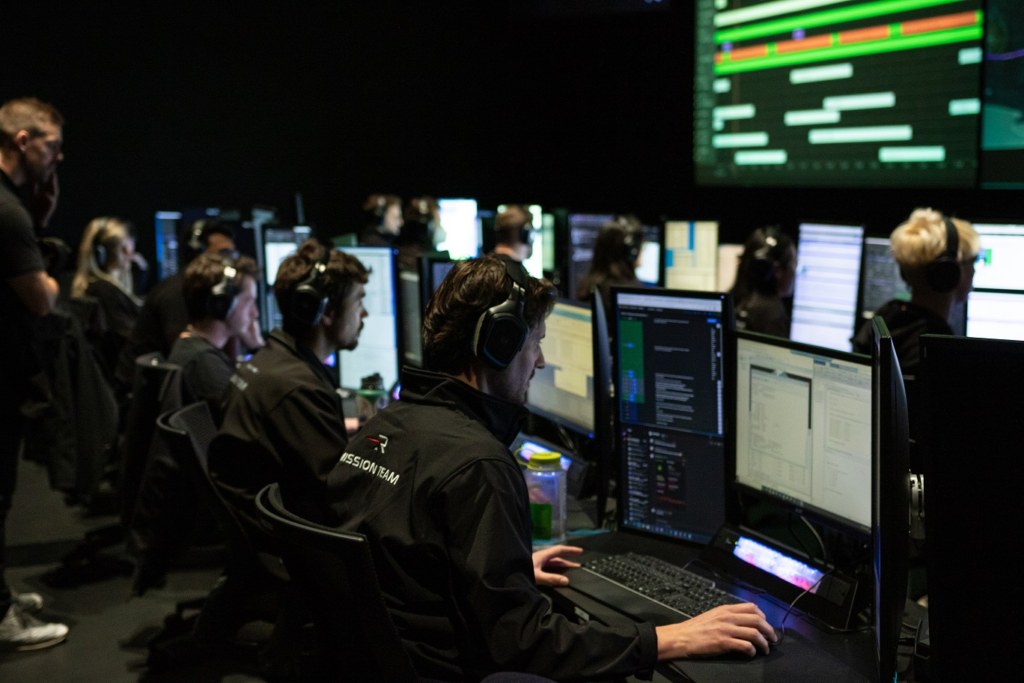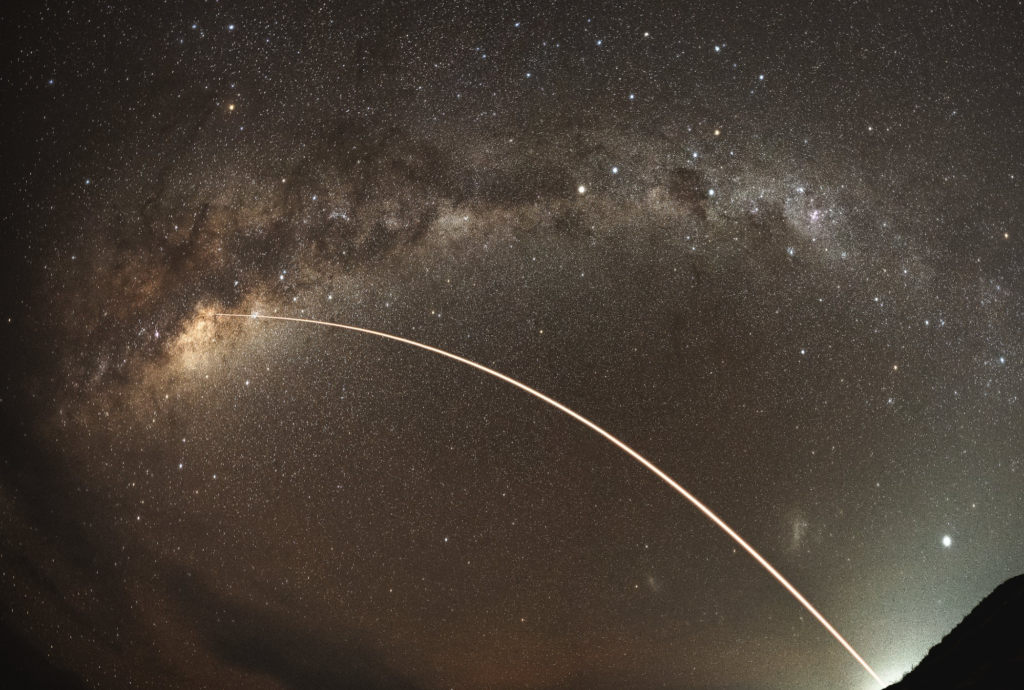
Rocket Lab’s Photon Spacecraft Completes Third Burn During CAPSTONE Mission
For a while now many of us have been keeping track of Rocket Lab’s progress as they prepared for their first mission to the Moon. CAPSTONE is expected to play an important role in the future of Gateway’s orbit and more. Rocket Lab was recently responsible for launching the payload and delivering it all the way to the Moon using both Electron and Photon.
After a successful launch only a few days ago, Rocket Lab is now giving updates on Photon’s progress in the long journey. This consists of multiple orbit raising burns and maneuvers to get the payload on a trajectory for the Moon. All of which need to go perfectly in order for the mission to be a success, and help Artemis’s plans.
It is not easy at all to reach the Moon. This especially is the case when talking about a small-lift launch vehicle. This being said, Rocket Lab is a very impressive company that has managed to complete a large host of ambitious missions before. Here I will go more in-depth into how the initial launch went, recent updates from the company, and what to expect in the coming weeks regarding this launch.
Recent Updates

As you can imagine, a lot has happened in the last few days with the actual launch and now positioning of Photon and more. It began on June 28th when Rocket Lab tweeted saying, “Our 27th Electron rocket takes flight, successfully delivering Photon and CAPSTONE to low Earth orbit. CAPSTONE’s lunar journey has begun! Thank you to our mission partners @NASA, @AdvancedSpace, and @TerranOrbital.” Watching the launch we saw Electron take off from LC-1 and continue to gain speed and altitude. It then proceeded through each launch event as intended. Not long after Rocket Lab CEO Peter Beck tweeted mentioning, “Update: Lunar Photon has completed its first scheduled burn raising the orbit to 1040km x 170km. We are on our way.” Rocket Lab later went more in-depth pointing out, “We’ve just had word of a successful second HyperCurie burn. From here, HyperCurie will perform apogee raising burns around every 24 hours for the next five days, before a final burn on the sixth day to set CAPSTONE on a trans lunar injection.”
To put in perspective how big of a deal this mission is, Peter Beck said, “Electron is such an amazing vehicle and the team behind it are even more so. Capstone was the heaviest and hardest mission we have ever lifted by a long way but Electron completed the lift flawlessly even with performance to spare.” Next, only around 22 hours ago, Rocket Lab tweeted again this time mentioning, “MOON UPDATE: Lunar Photon’s HyperCurie engine has successfully completed the 3rd orbit raising burn, bringing #CAPSTONE closer to the Moon!” Finally, only around 11 hours ago, they provided the most recent update on the engine burns pointing out, “MOON UPDATE: We’ve successfully ignited Lunar Photon’s HyperCurie engine for the 4th time, raising orbit and accelerating #CAPSTONE closer to the Moon!” In total there are seven planned orbit raising maneuvers, each bringing the CAPSTONE spacecraft closer to the Moon. Over these next few days, Lunar Photon’s HyperCurie engine will perform a series of orbit raising maneuvers by igniting periodically to increase Photon’s velocity, stretching its orbit into a prominent ellipse around Earth. Six days after launch, HyperCurie will ignite one final time, accelerating Photon Lunar to 24,500 mph (39,500 km/h) and setting it on a ballistic lunar transfer. Within 20 minutes of this final burn, Photon will release CAPSTONE into space for the first leg of the CubeSat’s solo flight. CAPSTONE’s journey to NRHO is expected to take around four months from this point. Assisted by the Sun’s gravity, CAPSTONE will reach a distance of 963,000 miles from Earth – more than three times the distance between Earth and the Moon – before being pulled back towards the Earth-Moon system. Once successfully inserted into the orbit, CAPSTONE is expected to remain there for at least six months, allowing NASA to study the orbit dynamics.
Future of CAPSTONE

Now that we know more about the results of this mission so far, we can take a closer look at what to expect in the next few days and the purpose of CAPSTONE. Not long after the mission Rocket Lab founder and CEO Peter Beck said the launch of the CAPSTONE mission was the culmination of two and a half years of work and it pushed the Electron launch vehicle to the limit. “Electron lifted its heaviest payload yet at 300 kg – the combined mass of Lunar Photon and CAPSTONE. We pushed the Rutherford engines harder than we ever have before and deployed Lunar Photon and CAPSTONE exactly where they needed to go to begin the next mission phase. Now it’s Lunar Photon’s show and we’re immensely proud of its performance so far. We’re really pushing the boundaries of what’s possible for interplanetary smallsat missions with CAPSTONE and it’s exciting to think about the possibilities it opens up for more cost-effective missions to Mars, Venus, and beyond.”
In terms of the mission right now, Photon is the star of the show as it works to raise the orbit and prepare to send CAPSTONE all the way to the Moon. CAPSTONE is integrated onto Photon, which Rocket Lab describes as a highly capable spacecraft based on the heritage Electron Kick Stage. Photon provides in space propulsion, communications, power, and high-accuracy attitude determination and control, supporting CAPSTONE for six days after launch during the orbit raising maneuvers. Photon’s HyperCurie engine will provide the final push to help CAPSTONE escape Earth’s orbit, setting it on a ballistic lunar transfer to achieve the NRHO.
The purpose of this mission has to do with Artemis and the future of returning humans to the Moon. Designed and built by Tyvak Nano-Satellite Systems, a Terran Orbital Corporation, and owned and operated by Advanced Space on behalf of NASA, CAPSTONE will be the first spacecraft to test the Near Rectilinear Halo Orbit (NRHO) around the Moon. This is the same orbit intended for NASA’s Gateway, a multipurpose Moon-orbiting station that will provide essential support for long-term astronaut lunar missions as part of the Artemis program. CAPSTONE’s primary objective is to test and verify the calculated orbital stability of a Near Rectilinear Halo Orbit around the Moon, the same orbit planned for Gateway. NASA’s Gateway is a small space station that will orbit around the Moon to provide astronauts with access to the lunar surface. It will feature living quarters for astronauts, a lab for science and research and ports for visiting spacecraft. CAPSTONE will also test a navigation system developed by Advanced Space that will measure its absolute position in cislunar space using interaction with NASA’s Lunar Reconnaissance Orbiter without relying on ground stations for navigation support. CAPSTONE is one of the first steps to learn how to operate more robust missions in this unique orbit, thus laying the groundwork for future exploration of our solar system. This helps give an idea of how important this mission is and the impact it’s expected to have on the future.
The orbit, formally known as a near rectilinear halo orbit (NRHO), is significantly elongated. Its location at a precise balance point in the gravities of Earth and the Moon, offers stability for long-term missions like Gateway and requires minimal energy to maintain. CAPSTONE’s orbit also establishes a location that is an ideal staging area for missions to the Moon and beyond. The orbit will bring CAPSTONE within 1,000 miles of one lunar pole on its near pass and 43,500 miles from the other pole at its peak every seven days, requiring less propulsion capability for spacecraft flying to and from the Moon’s surface than other circular orbits. After a four-month journey to its target destination, CAPSTONE will orbit this area around the Moon for at least six months to understand the characteristics of the orbit. Specifically, it will validate the power and propulsion requirements for maintaining its orbit as predicted by NASA’s models, reducing logistical uncertainties. It will also demonstrate the reliability of innovative spacecraft-to-spacecraft navigation solutions as well as communication capabilities with Earth. The NRHO provides the advantage of an unobstructed view of Earth in addition to coverage of the lunar South Pole. To test these new navigation capabilities, CAPSTONE has a second dedicated payload flight computer and radio that will perform calculations to determine where the CubeSat is in its orbital path.
Conclusion
After an exciting build up, the CAPSTONE mission has finally launched and so far has been a huge success. Just a few days ago on June 28th, we watched Electron take off on a mission headed to the Moon. Over the next 48 hours Rocket Lab has been providing updates on Photon’s orbit raising maneuvers, 7 of which are planned in preparation for the journey to the Moon. This is a historic mission for Rocket Lab and the future of the company. We will have to wait and see how it progresses and the impact it has on the space industry.
